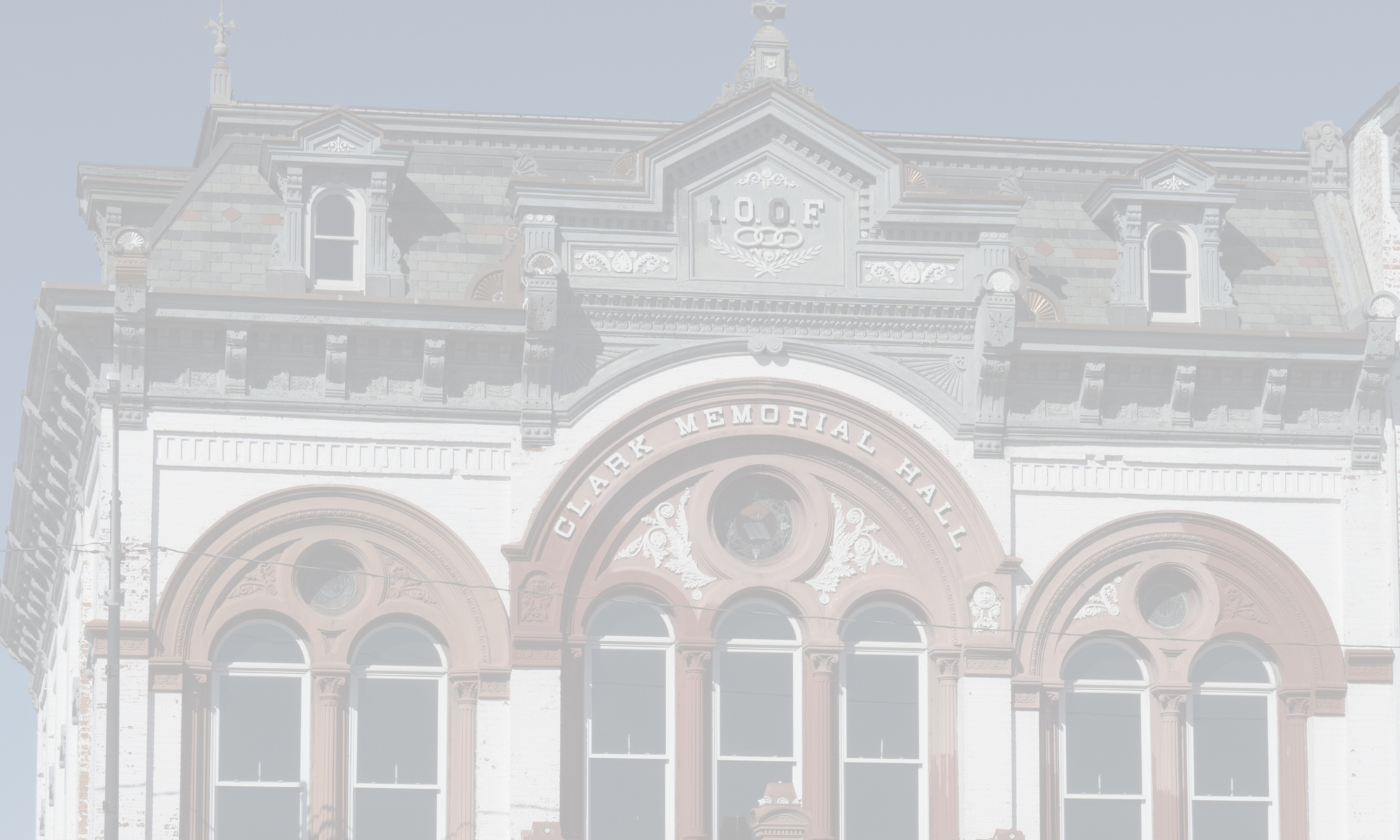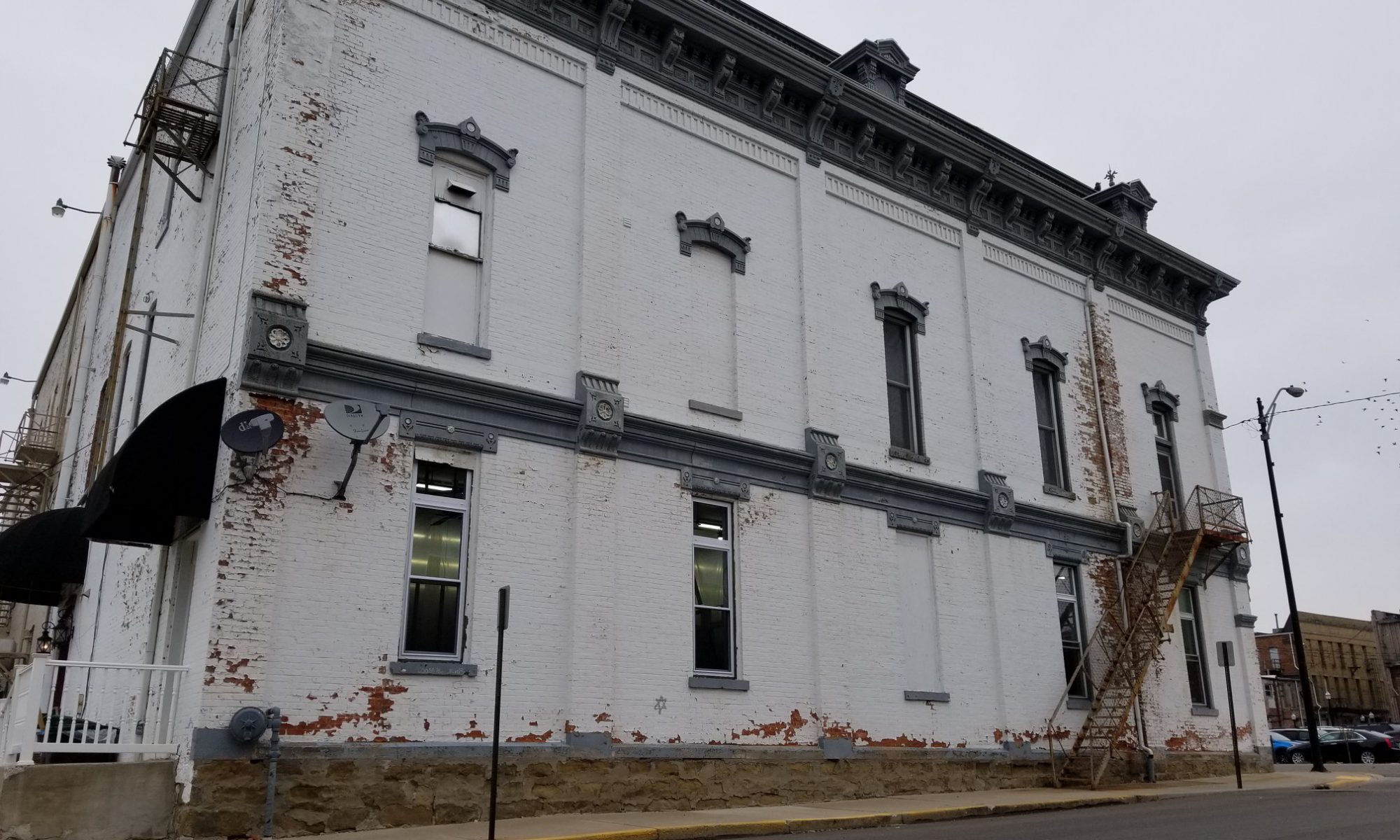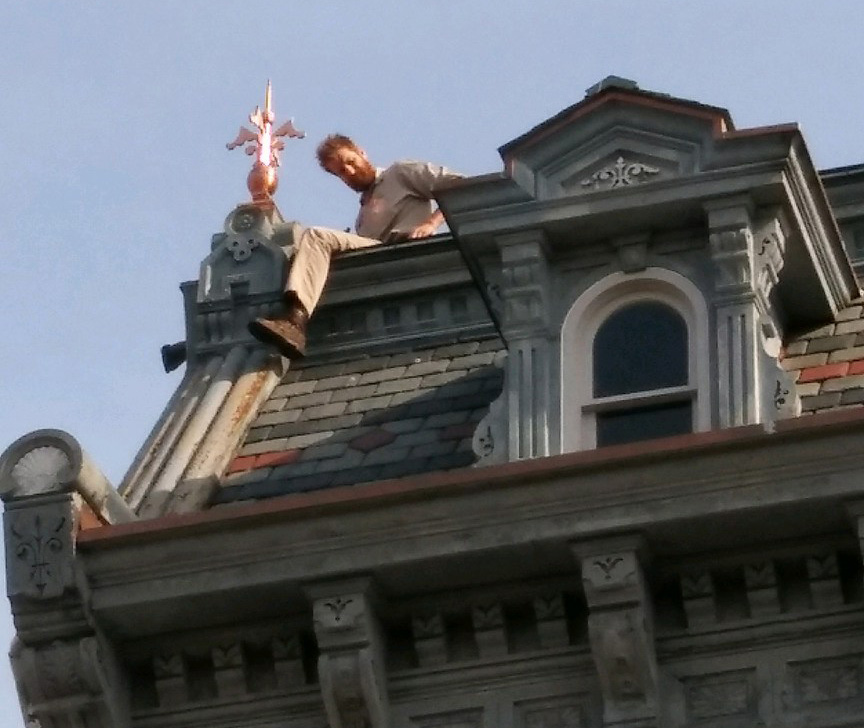On two of the original doors, I removed the heavily painted hardware and used a low heat (200F) overnight bake with some dish soapy water to strip the paint from the old cast iron.
I then primed and painted them gold. For the detail inlays, I used some thinned black enamel paint and a Q-tip to fill in the low spots to make the designs pop. I then hit them with multiple layers of clear lacquer to seal them. They have yet to be re-affixed to the building; we will wait until painting is complete!
by late September, we were making real progress. We were uncovering detail in the woodwork that was not visible with 10+ layers of paint.
In all, we put in approximately 350 hours of work with the heat guns from August – October.
As we continued to strip the woodwork on the front façade, we found that the rosettes were beyond repair due to water damage and paint. I found someone to 3d-print replacements that were similar to the originals. Later, I would nail them onto the woodwork before priming.
While Lenco was working on the south side brick, I was getting worried about spiraling costs. I decided I would use my free time to begin stripping the east side window trim and doors with a heat gun so that I wouldn’t have to pay someone to. After a week or two, I enlisted the help of my mom, Lisa Maggard. She was handy with a heat gun as well since we grew up in a Victorian era house that she spent many years working on.
I uncovered one of the cast iron support columns of the Armory Block building buried under trim boards. Peculiar how they covered up stuff like that over the years.
After trying about half a dozen chemical stripping products, we settled on one that seemed to work — but it was clear that it would take multiple applications. Sure enough, between 3 and 6 applications on every square inch of the entire 70′ x 30′ south façade was required in order to get to a relatively uniform red color. The process took nearly 3 months.
Our plan for the building was to strip the brick of all paint, and leave it natural red.
We chose this due to the damage that paint causes to soft clay brick during Michigan’s freeze/thaw cycles. Bringing the building back down to natural brick will allow the brick to breathe; and prevent constant deterioration and the need to patch and re-paint every few years.
We hired Lenco Painting – a local contractor. Step 1 was a light power wash with low pressure so as to not damage the brick that was still in decent shape.
The first thing we did was actually part of an interior renovation we did in early 2019. We pulled off the plywood on two of the exterior windows on the south façade, and had the old damaged windows replaced. This left only 3 remaining boarded up windows on the south side. All 3 of them are unable to be turned into windows again due to inside floor layouts, so, we’ll eventually be putting in 3 “fake” windows to make the south façade look uniform.
In April 2021, the work that Grand River Builders did on the Mansard roof was completed.
in April, 2021, the two new Finials were installed.
Grand River also fabricated two replacement finials for the front corners of the building.



